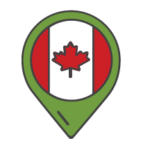Many Ontarians like yourself rely on their vehicle to get them where they need to go. Whether it’s a weekend excursion, commuting to work, or running seemingly endless errands, it’s hard for the average person to get from point A to point B without a car. As the cost of purchasing a brand-new car climbs even higher, many people decide to purchase a pre-owned vehicle. But how do you know the used vehicle is a good purchase? That’s where this checklist on what to look for when buying a used car can help.
As your trusted auto insurance brokers, the team at Morison Insurance wants you to be confident in your decision to buy a pre-owned car. That’s why we’re sharing what to look for when buying a used car. From checking for foggy headlights to ensuring the seatbelts work to examining the undercarriage for rust, we’ll help you ensure you get a reliable car.
You need a car, but are unsure if you should get a new one or a used one. New cars are generally more expensive, with higher upfront costs and insurance, but come with the latest features and technology, and are backed by a manufacturer’s warranty coverage, which provides an extra level of quality assurance. Used cars tend to have lower upfront and insurance costs. They are considered to be an environmentally-friendly purchase as you’re buying a car that doesn’t require any additional manufacturing. Still, depending on their age, they likely don’t have the latest features, may have passed their warranty cutoff date, and, most importantly, someone else has been driving them a lot before you.
With a new car, you are generally the first person putting serious kilometres on the vehicle, but with a second-hand car purchase, someone else has been driving it around and has made it their own. This means there is additional wear and tear not associated with brand-new vehicles. Perhaps the previous owner spilled a few coffees inside, or tended to go over speed bumps too fast. No matter the case, when buying a used car, what to look for checklists should be at the forefront of your mind to prevent any major purchase regret later on.
There is more to buying a used car than just the feel of it. It’s imperative that you take the time to examine it to ensure it is a good purchase. Some of the items that should be included on every checklist of what to look for when buying a used car are the year and mileage, vehicle history report, the condition of the interior and exterior, check under the hood and undercarriage, and more
Basically, how old is the vehicle, and how much has it been driven? Older cars may be fully functional, but they may lack the latest technology and features. While items like heated seats are considered luxuries, newer vehicles will also have higher safety ratings.
However, mileage tends to be where the true age of the vehicle is found. While cars with lower mileage can be in worse shape than those with more mileage of similar age, basically, the more you drive, the more wear and tear you can put on a vehicle.
On average, Ontarians drive about 16,000 kilometres per year, slightly higher than the national average. If the used car you’re looking at has more than the average annual mileage, and the purchase price is not discounted to reflect that, you may want to consider a different type of vehicle.
Used cars have been driven before. That is an undisputed fact. That’s where an Ontario used vehicle information package (UVIP) comes in handy. It is a document that contains information such as previous ownership history, license plate information, whether there are any outstanding liens on a vehicle, and whether it has been reported as wrecked. UVIPs are legally required for some sales, such as when you buy from a private owner, but are not required when you are buying from a used car dealership. You can also ask the seller for a vehicle history report or get a CARFAX Canada Vehicle History Report, as well as previous service or maintenance records.
When going through your checklist of what to look for when buying a used car from a dealership or a private seller, be prepared to get dirty. In this case, get on the ground and check the undercarriage for signs of wear and leaks, corrosion, hidden repairs, or structural damage. This can help save you from the extra costs of repairs to the second-hand car purchase in the not-so-distant future.
Even if you aren’t a car expert, lift up the hood and check for signs of rust or wear on components like belts or batteries, as well as the transmission fluid, brake fluid, oil levels, and antifreeze.
Transmission fluid levels should be high, with a clear reddish colour. Make sure to check to see if it has any strange odours, as if it smells burnt, it could indicate the transmission is overheating. Brake fluid levels indicate how worn the brakes are, with lower levels indicating you may need repairs or replacement brakes. Oil level tests need to be done at least 10 minutes after the car stops running, and if the dipstick comes out with either really dark or muddy in texture, it means it hasn’t been changed in a long period of time, indicating a lack of routine maintenance. The antifreeze should be clear with no contaminants.
The next item on our checklist of what to look for when buying a used car is to do a comprehensive exterior inspection. This means examining components such as:
Check for signs of damage, such as scratches, rust, and dents, as these can indicate previous or hidden issues and can help you negotiate a fair price reduction due to their current condition.
Much like the vehicle exterior, you need to carefully inspect the inside for signs of damage. This includes all seat belts, doors, seat warmers, air conditioning, stereo, gas pedal, brake pedal, floors, and more for scratches, rips, stains, or cracks, as well as any warning lights when the vehicle is on. Ensure any mechanical features work properly to prevent any safety concerns with your newly purchased used car.
One of the most tell-tale signs of car issues is strange noises, so no list of what to look for when buying a used car is complete without checking it for strange noises. So when starting the engine or taking it out for a test drive, in addition to seeing how it feels, keep your ears peeled for odd noises. Any clunking, screeching, popping, humming, or other odd sounds could indicate a number of auto and mechanical issues, from feathered tires to worn shock absorbers to panel alignment issues, all of which can result in costly repair bills.
Depending on how old the car is, it may still be covered by its manufacturer’s warranty. Or, if you’re buying from a used car dealership, they may offer an extended warranty you can purchase for the used vehicle. Either way, ask for proof of warranty coverage, as without it, you would be solely responsible for the cost of any repairs.
Not everyone is a car expert. If you are unsure or don’t know what to look for when buying a used car, or have spotted a potential issue, you should consider getting an expert to come and perform a vehicle inspection with you. Bring a knowledgeable friend with you to check out the car, or even have an independent mechanic examine it during a pre-purchase inspection. That way, you can have peace of mind knowing that due diligence is being done to ensure it's safe for use on public roads.
If you have gone through your checklist of what to look for when buying a used car and everything is checked out, don’t forget to get the proper insurance policy for it. The team of brokers at Morison Insurance will ensure you get the right coverage for your needs when it comes to auto insurance.
Give us a call at 1-800-463-8074, or click the link above to get a free online quote today!
This content is written by our Morison Insurance team. All
information posted is merely for educational and informational purposes. It is
not intended as a substitute for professional advice. Should you decide to act
upon any information in this article, you do so at your own risk. While the
information on this website has been verified to the best of our abilities, we
cannot guarantee that there are no mistakes or errors.


